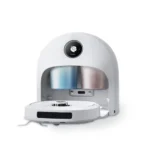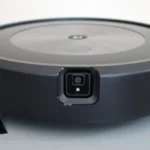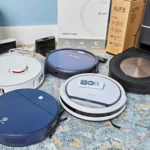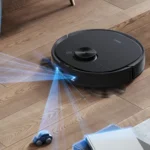Have you ever wondered how those smart vacuum cleaners detect obstacles and avoid them without human intervention? It may seem like magic to some, but these innovative devices use advanced technology to navigate through any space. Smart vacuums are becoming increasingly popular due to their ability to clean hard-to-reach areas and adapt to different floor surfaces. In this article, we will delve deeper into the features that make smart vacuums stand out from traditional vacuums, the different ways they detect and avoid obstacles and the benefits of using these modern machines. So, buckle up and get ready to discover the inner workings of this innovative technology.
What Makes Smart Vacuums Different from Traditional Vacuums?
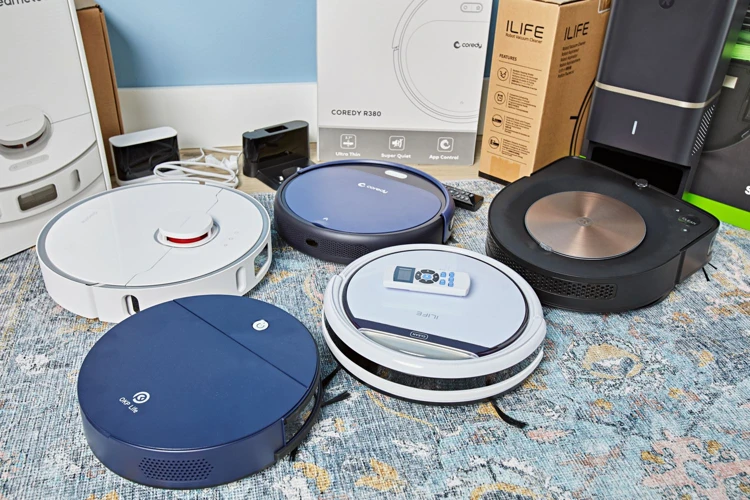
Have you ever wondered what makes smart vacuums different from traditional vacuums? Well, wonder no more! Smart vacuums are revolutionizing the cleaning industry with their advanced technology, including higher sensory technology, artificial intelligence, and greater mobility and control. These features have made cleaning faster, more convenient, and more efficient than ever before. In this section, we’ll take a closer look at what sets smart vacuums apart from their traditional counterparts. You can also read more about vacuum sensors in our article on vacuum sensors, or explore the role of navigation in smart vacuums, the significance of AI in cleaning, different cleaning modes available in smart vacuums, room-mapping technology, and the importance of Wi-Fi in smart vacuum cleaners.
Higher Sensory Technology
Smart vacuum cleaners represent a significant improvement over traditional vacuum cleaners due to their higher sensory technology. This technology allows smart vacuums to detect and avoid obstacles with greater accuracy and efficiency. Here are some of the key aspects of smart vacuum cleaner sensory technology:
- Lidar Sensors: Lidar sensors use lasers to detect obstacles and navigate around them. They create a 3D map of the space, which enables the smart vacuum cleaner to identify and avoid obstacles accurately, ensuring the cleaning process is carried out efficiently.
- Optical Sensors: Smart vacuums are equipped with high-powered optical sensors, which detect small obstacles and compensate for any height variations on the floor. This makes it easier for the vacuum to clean every part of the floor effectively.
- Acoustic Sensors: Smart vacuum cleaners contain acoustic sensors that use sound waves to identify the location of obstacles. These sensors work by emitting high-frequency sound waves and then measuring the time it takes for them to bounce back. This allows the vacuum cleaner to create a detailed map of the surroundings and accurately navigate around obstacles.
- Touch Sensors: Unlike traditional vacuums, smart vacuums have touch sensors that detect when they come into contact with an obstacle. This allows them to stop or change direction quickly, minimizing the risk of damage to furniture or other objects.
- Smartphone Connectivity: Smart vacuum cleaners can be connected to smartphones to provide an extra level of control. Users can remotely control the vacuum cleaner, monitor its progress, and receive notifications when cleaning is complete. This makes it easier to manage the cleaning process, even when you are away from home.
The higher sensory technology of smart vacuum cleaners provides a significant advantage over traditional vacuums. These vacuums are equipped with advanced sensors that enable them to navigate around obstacles with greater accuracy and safety. As a result, they deliver an efficient and effective cleaning performance every time they are used.
Artificial Intelligence
Smart vacuum cleaners are not only equipped with higher sensory technology, but they also have the ability to make intelligent decisions on their own. This is all thanks to the inclusion of artificial intelligence (AI) in their functionality.
At its core, AI technology involves having machines and software that can perform tasks that normally require human-like intelligence. In relation to smart vacuum cleaners, this means that they can make decisions on their own, based on the data they collect from their sensors.
One example of AI technology in smart vacuums is the use of machine learning algorithms that enable them to gain a better understanding of their surroundings over time. The more they move around and collect data, the more accurate their mapping and navigation capabilities become.
Another example is the use of AI-powered obstacle recognition technology. This enables the vacuum cleaner to not only detect obstacles, but also to identify them and determine the best course of action to avoid them. This can include changing direction, slowing down, or stopping altogether.
AI technology also allows smart vacuums to adapt to different cleaning environments and surface types. This means that they can adjust their suction power according to the type of flooring they are cleaning, or switch to a different cleaning mode when they encounter particularly tough messes.
AI helps to improve the efficiency of smart vacuums. With the ability to make intelligent decisions on their own, they can minimize the amount of time and energy required to clean a space. This makes them a more cost-effective and convenient option for homeowners who value their time and energy.
The inclusion of AI technology in smart vacuums helps to improve their functionality and overall performance. By making intelligent decisions based on the data collected from their sensors, smart vacuums are able to clean more efficiently and effectively than traditional vacuum cleaners.
Greater Mobility and Control
Smart vacuums offer greater mobility and control compared to traditional vacuums due to their advanced features and technology. Here are some ways that smart vacuums provide greater mobility and control:
- Remote Control: Smart vacuums typically come with a remote control, allowing you to control the vacuum from a distance. You can turn it on/off, change the cleaning mode, and even direct the vacuum to clean specific areas.
- Mobile App: Many smart vacuums also come with a mobile app that lets you control the vacuum using your smartphone or tablet. This allows you to start or stop the cleaning process from anywhere as long as you’re connected to the same Wi-Fi network as your vacuum.
- Voice Control: Some smart vacuums are equipped with voice control functionality. This means that you can control the vacuum using voice commands through a smart speaker or digital assistant like Amazon Alexa or Google Assistant.
- Multiple Cleaning Modes: Smart vacuums often come with multiple cleaning modes, such as auto mode, spot cleaning mode, and edge cleaning mode. This allows you to customize the cleaning process based on your specific needs and requirements.
- Automated Charging: Smart vacuums are designed to return to their charging dock automatically once they’ve finished cleaning or when their battery is low. This ensures that the vacuum is always ready for the next cleaning session.
These advanced mobility and control features make smart vacuums much more efficient and convenient to use than traditional vacuums. With the ability to control the vacuum remotely or using voice commands, access to a range of cleaning modes, and automated charging, smart vacuums provide the ultimate cleaning experience.
How Do Smart Vacuums Detect Obstacles?
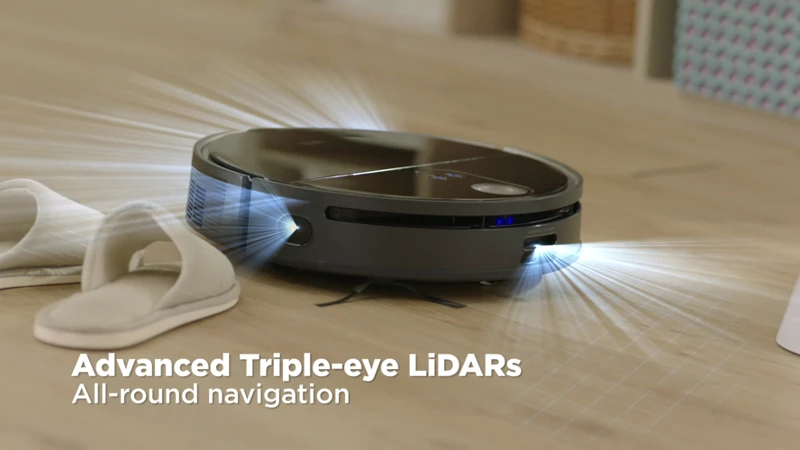
As we know, smart vacuums are equipped with advanced technology that allows them to function more efficiently than traditional vacuums. One of the most impressive features of these devices is their ability to detect and avoid obstacles that are in their path. But, how exactly do they do this? Let’s take a closer look at the different types of sensors that smart vacuums use to detect and avoid obstacles in real time.
Cameras
One of the ways that smart vacuum cleaners are able to detect obstacles is through the use of cameras. These cameras are usually placed on the top or sides of the vacuum, and they capture images of the surrounding environment. The images captured by the cameras are then analyzed by the vacuum’s onboard computer to detect any obstacles that might be in the way.
Here are some ways that cameras help smart vacuums detect obstacles:
- Object recognition: The camera can recognize common objects that might be on the floor, like furniture, toys, or cords. This helps the vacuum identify potential obstacles.
- 3D mapping: Some smart vacuums use cameras to create a 3D map of the room. This map is then used to create a plan for cleaning the room and to identify potential obstacles.
- Facial recognition: Some advanced smart vacuums can even recognize faces! This can be useful if your pet is often in the way while the vacuum is cleaning.
One of the benefits of using cameras for obstacle detection is that they are very accurate. The vacuum can see the obstacle and analyze it in real-time, allowing it to adjust its cleaning path accordingly.
However, cameras can also have some limitations. For example, if the room is very dark or if there are a lot of shadows, the camera might not be able to see the obstacles properly. Additionally, if the camera is dirty or obstructed, it might not be able to detect obstacles at all.
Though, cameras are an important tool for smart vacuums when it comes to detecting obstacles and ensuring efficient cleaning.
IR Sensors
Smart vacuums are slowly becoming a new trend in modern households, largely thanks to their ability to detect and avoid obstacles in real-time. One of the technologies that enable this feature is the IR sensor. These sensors are designed to detect infrared radiation, allowing the vacuum to ‘see’ in the dark.
How IR Sensors Work
IR sensors work by detecting and measuring the infrared radiation that’s emitted by objects. They do this by using a receptor that’s sensitive to infrared light. When the receptor detects this type of radiation, it sends an electric signal to the vacuum’s controller, which in turn tells the machine how to adjust its settings based on the detected object’s distance and location.
Advantages of IR Sensors in Smart Vacuums
IR sensors offer a range of benefits that make them an ideal choice for smart vacuums. Here are some of the key advantages:
| Advantages of IR Sensors |
|---|
| • High accuracy |
| • No interference from other light sources |
| • Can detect both small and large objects |
| • Can detect objects in the dark |
Limitations of IR Sensors in Smart Vacuums
However, IR sensors are not perfect and do have some limitations. Here are some of the key limitations:
| Limitations of IR Sensors |
|---|
| • Limited range of detection |
| • Cannot detect transparent or translucent objects |
| • Can be disrupted by strong heat sources |
Conclusion
IR sensors play a significant role in the obstacle detection and avoidance system of smart vacuums. While they are not perfect, their unique features enable smart vacuums to navigate around objects with accuracy and precision. By understanding the strengths and weaknesses of IR sensors, you can better appreciate the technology that powers your smart vacuum.
Ultrasonic Sensors
Ultrasonic sensors are another common obstacle detection technology used in smart vacuum cleaners. These sensors work by emitting high-frequency sound waves that bounce off objects and return to the sensor. The time it takes for the sound wave to return is measured and used to determine the distance between the vacuum cleaner and the object.
One advantage of ultrasonic sensors is that they are not affected by light, dust or other visual obstacles that may interfere with camera or IR sensor operation. They are also effective in detecting soft or irregularly shaped objects that might not be detected by other sensors.
However, ultrasonic sensors have limitations. They can only detect objects that are in their direct line of sight, so objects that are partially hidden or behind other obstacles may not be detected. The accuracy and range of ultrasonic sensors can be affected by the shape and material of the objects they encounter. For example, sound waves bounce off hard, flat surfaces more predictably than soft, irregular surfaces.
Despite these limitations, many smart vacuums use a combination of ultrasonic sensors with other obstacle detection technologies to provide a more robust obstacle detection and avoidance system.
| Advantages of Ultrasonic Sensors | Limitations of Ultrasonic Sensors |
|---|---|
|
|
Cliff Sensors
Cliff sensors are another type of sensor that smart vacuums utilize in order to detect potential obstacles. These sensors work by emitting a beam of light and measuring how long it takes for the light to reflect back. If there is no reflection, it indicates that the vacuum is about to encounter a drop off, such as a staircase.
There are several advantages to using cliff sensors in smart vacuums. Firstly, they provide a reliable way to prevent the vacuum from falling down stairs, which can be dangerous and cause damage to the vacuum. Cliff sensors allow for more efficient cleaning as the vacuum can be programmed to clean around stairs and ledges, rather than wasting time trying to navigate down them.
Additionally, smart vacuums can also utilize cliff sensors to detect other potential drop-offs, such as balconies or open windows, to avoid accidental damage or injury.
However, there are some limitations to cliff sensors that need to be taken into consideration. For instance, dark colors or certain surfaces may not reflect the light as well, thus causing inaccurate readings. It is also important to note that cliff sensors are not designed to detect obstacles at ground-level, such as rugs or small objects, so vacuums may still need to rely on other sensors to navigate around those types of obstacles.
Cliff sensors are an important component of an effective obstacle detection and avoidance system in smart vacuums. By utilizing a combination of sensors, including those that can detect drops or cliffs, smart vacuums can navigate effectively around most household obstacles to provide efficient and effective cleaning.
How Do Smart Vacuums Avoid Obstacles?
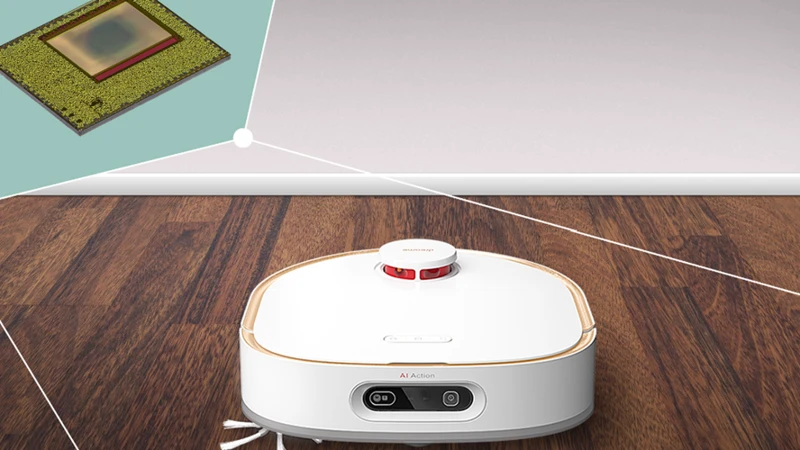
After detecting obstacles, the next critical function of a smart vacuum is to avoid them efficiently without compromising on cleaning quality. In this section, we delve deeper into the workings of smart vacuums and explore the technology that aids their obstacle avoidance capabilities. With the aid of mapping and navigation, advanced algorithms, and real-time adaptation, these vacuums can navigate through spaces with ease, ensuring every nook and cranny is reached without bumping into furniture or getting stuck. Let’s explore how these features work together to keep your floors clean while avoiding obstacles.
Mapping and Navigation
Smart vacuums use an advanced mapping and navigation system, which allows them to create a detailed map of the layout of the room they are cleaning. This enables them to detect and avoid obstacles with pinpoint accuracy, while cleaning the room effectively and efficiently.
Here are the key features of smart vacuum mapping and navigation:
- Simultaneous Localization and Mapping (SLAM): The SLAM algorithm is used by smart vacuums to create a detailed map of the room in real-time. This algorithm uses a variety of sensors and cameras to scan the room and create a digital map of the area as the vacuum navigates around it.
- Multiple Sensors: Smart vacuums use a range of sensors, including laser sensors, infrared sensors, and cameras, to map the room accurately. These sensors continuously scan the surrounding area and provide real-time information about the location of obstacles.
- Virtual Walls: Smart vacuums use virtual walls, which are created using software, to define the boundaries of the cleaning area. These virtual walls are particularly useful when cleaning large rooms, as they allow the vacuum to clean specific areas without the need for physical barriers or manual intervention.
- Obstacle Avoidance: Once the map has been created, smart vacuums use this information to navigate around obstacles. They can quickly detect any obstacles in their path and adjust their route to avoid them. This enables the vacuum to clean around furniture and other obstacles without getting stuck or causing damage.
- Path Optimization: With the detailed map of the room, smart vacuums can optimize their path and create the most efficient cleaning route. They can clean the entire room in the shortest possible time, ensuring a thorough clean without wasting energy and time on unnecessary movement.
The mapping and navigation system of smart vacuums enables them to clean your home with ease, while avoiding obstacles and optimizing their cleaning path. This not only makes cleaning more efficient but also ensures that your home is cleaned more thoroughly.
Advanced Algorithms
One of the key components that make smart vacuums effective at obstacle avoidance is the use of advanced algorithms. These algorithms are designed to analyze and interpret the data collected from the sensors in real-time, allowing the vacuum cleaner to make split-second decisions about how to proceed through a room.
Here are some examples of advanced algorithms that smart vacuums use:
- Path planning algorithms: these algorithms analyze the layout of a room and calculate the most efficient path for the vacuum cleaner to take, taking into account any obstacles that are detected.
- Motion planning algorithms: these algorithms work in real-time to adjust the vacuum cleaner’s trajectory as it moves through a space, making sure it avoids any obstacles that are detected.
- Clustering algorithms: these algorithms analyze data from multiple sensors and group similar data points together to create a more accurate picture of the environment the vacuum cleaner is in.
- Machine learning algorithms: these algorithms allow the vacuum cleaner to “learn” from its past experiences, improving its obstacle avoidance capabilities over time.
These algorithms work together to ensure that the smart vacuum can effectively navigate through a room while avoiding any obstacles that might be in the way. By constantly analyzing data from multiple sensors and making adjustments in real-time, the vacuum cleaner can operate with a high degree of precision and efficiency, ultimately leading to a more effective cleaning experience for the user.
Real-Time Adaptation
Smart vacuums are equipped with advanced sensors and algorithms that allow them to adapt in real-time to obstacles they encounter during the cleaning process. This means that when a smart vacuum encounters an obstacle, it will quickly adjust its cleaning pattern to maneuver around the obstacle and continue cleaning.
Real-time adaptation is made possible through a combination of advanced sensors and algorithms. Smart vacuums use a variety of sensors, including cameras, IR sensors, ultrasonic sensors, and cliff sensors, to detect obstacles in their path. Once an obstacle is detected, the smart vacuum’s advanced algorithms come into play, analyzing the obstacle and determining the best course of action.
One example of real-time adaptation in action is when a smart vacuum encounters furniture in a room. The vacuum’s sensors detect the furniture and the advanced algorithms analyze the obstacle. Based on this information, the vacuum may choose to adjust its cleaning pattern to navigate around the furniture, or it may use its flexible design to clean underneath the furniture.
Another example of real-time adaptation is when a smart vacuum encounters different floor surfaces within a single room. The vacuum’s sensors detect the change in surface and the advanced algorithms adjust the cleaning settings accordingly. For example, if the vacuum is cleaning a carpeted area and then moves onto a hardwood floor, the vacuum may increase suction power to ensure a thorough clean.
Real-time adaptation is a key feature of smart vacuums that allows them to quickly and efficiently navigate around obstacles during the cleaning process. By using a combination of advanced sensors and algorithms, smart vacuums are able to adapt to their environment in real-time, resulting in a more efficient and effective cleaning experience.
Flexible Design
One of the key components of smart vacuum obstacle detection and avoidance is a flexible design. This design allows the vacuum to adjust to its environment and navigate around obstacles with ease.
A key aspect of a flexible design is the use of a variety of sensors (already mentioned in previous sections) that can be mounted on different parts of the vacuum. Some sensors can be placed on the bottom of the vacuum, allowing it to detect and avoid obstacles on the ground. Other sensors can be placed on the front and sides of the vacuum, giving it the ability to detect and avoid obstacles in its path.
Additionally, smart vacuums are built with parts that can withstand bumps and impacts. For example, some vacuums have soft bumpers that can absorb a hit without damaging furniture. Other vacuums have retractable brushes and side brushes that can flex and bend if they encounter an obstacle.
The flexibility of the design also extends to the vacuum’s software. Smart vacuums are often equipped with intuitive software that allows them to learn from their surroundings and adapt to their environment. This means that they can quickly adjust to new obstacles and make more accurate predictions about their surroundings.
One feature that highlights the flexibility of the design is the virtual wall barrier. This barrier can be placed anywhere in a room and creates an invisible boundary that the vacuum will not cross. This feature is ideal for rooms with delicate items or furniture that the vacuum should not come into contact with.
A flexible design is a crucial component of smart vacuum obstacle detection and avoidance. With a combination of sensors, bumpers, and software, these vacuums can navigate around obstacles with ease and efficiency.
What Are the Benefits of Smart Vacuum Obstacle Detection and Avoidance?
Smart vacuum cleaners are becoming increasingly popular due to their advanced obstacle detection and avoidance technology. But what are the benefits of this technology? How does it make cleaning your home more efficient, convenient, and cost-effective? In this section, we will explore the advantages of smart vacuum obstacle detection and avoidance, and how they can improve the overall cleaning results while reducing the maintenance required. From better navigation to increased durability, there are numerous reasons why smart vacuums are a top choice for today’s tech-savvy homeowner.
Efficiency
One of the major benefits of smart vacuum obstacle detection and avoidance technology is the increased efficiency it brings to vacuuming tasks. With traditional vacuums, cleaning a room typically involves pushing the machine around and maneuvering it to avoid obstacles. However, with a smart vacuum equipped with obstacle detection technology, the machine is able to navigate around obstacles on its own, making the cleaning process much quicker and more efficient.
Here are some ways that obstacle detection and avoidance technology increases efficiency:
- Time-saving: With a smart vacuum, you won’t have to spend time manually moving the machine around obstacles, which can be very time-consuming, especially in larger rooms. The machine can work on its own, allowing you to focus on other tasks or simply relax while the vacuum does the work.
- Improved Coverage: Smart vacuums with obstacle detection and avoidance technology are able to more thoroughly clean a room since they are not hindered by obstacles. They can also detect and clean areas that may have been missed by traditional vacuums.
- Increased Speed: Smart vacuums can move more quickly and efficiently than traditional vacuums, which may have to slow down or stop completely when approaching obstacles. This means that the cleaning process is completed more quickly and effectively.
By utilizing obstacle detection and avoidance technology, smart vacuums increase efficiency and provide a more thorough cleaning experience. This technology is especially useful for those who have busy schedules and limited time to dedicate to cleaning tasks.
Convenience
One of the main benefits of smart vacuum obstacle detection and avoidance is the convenience it offers to users. With traditional vacuums, you have to manually guide the vacuum around obstacles or move furniture out of the way. However, with a smart vacuum, you can sit back and relax while the machine does the work for you.
Smart vacuums save you time and effort by taking care of the cleaning process while you focus on other tasks or simply enjoy some leisure time. You don’t have to worry about rearranging furniture or constantly monitoring the machine to make sure it doesn’t get stuck on an obstacle. The advanced algorithms and real-time adaptation of smart vacuums allow them to efficiently navigate through your home, avoiding obstacles and cleaning every corner.
Smart vacuums are easy to control and customize. Many models come with a smartphone app or voice control functionality, allowing you to schedule cleaning sessions or adjust settings from anywhere. You can set the vacuum to clean at specific times, or even create virtual boundaries to restrict the areas it cleans. This level of control means you can tailor the vacuum’s performance to your specific needs and preferences.
Another convenience of smart vacuums is the ability to clean hard-to-reach areas. With their flexible design and advanced sensors, smart vacuums can navigate around obstacles and reach under furniture or tight spaces. This means you can achieve a more thorough clean without having to move heavy furniture or strain your back reaching for dust in high places.
The convenience of smart vacuum obstacle detection and avoidance cannot be overstated. From effortless cleaning to complete control, smart vacuums offer a level of convenience that traditional vacuums simply can’t match.
| Benefits of smart vacuum obstacle detection and avoidance for convenience: |
|---|
| Effortlessly clean your home while you focus on other tasks or enjoy leisure time |
| Customize and control your vacuum’s performance with smartphone apps and voice control |
| Reach and clean hard-to-reach areas without moving furniture or straining your back |
Cost-Effectiveness
One significant benefit of smart vacuum obstacle detection and avoidance is the cost-effectiveness it offers. While traditional vacuum cleaners are cheaper, they require a lot of manual labor, and their efficiency is dependent on the user’s input. Smart vacuums, on the other hand, minimize the need for manual labor since they can operate on their own. This feature is essential for individuals who are busy and do not have enough time to clean their homes regularly.
Table: Comparison between Traditional and Smart Vacuums in Terms of Cost-Effectiveness
| Feature | Traditional Vacuum Cleaners | Smart Vacuum Cleaners |
|---|---|---|
| Initial cost | Low | High |
| Manual labor | High | Low |
| Electricity usage | High | Low |
| Maintenance cost | High | Low |
Additionally, smart vacuums consume less power compared to traditional vacuums, leading to a significant reduction in electricity costs. Smart vacuums’ advanced algorithms can also identify which areas of the house require more cleaning, thus optimizing the cleaning process and leading to a reduction in electricity costs.
Smart vacuums require less maintenance compared to traditional vacuums, leading to long-term cost-effectiveness. Since smart vacuums use advanced sensors and algorithms, there is no need for regular cleaning or replacement of parts, unlike traditional vacuums that require constant maintenance.
Investing in a smart vacuum cleaner can be expensive initially, but in the long run, it offers cost-effectiveness by reducing manual labor, electricity consumption, and maintenance costs.
Less Maintenance
One of the major benefits of smart vacuum obstacle detection and avoidance is less maintenance required for the vacuum cleaner. This is because smart vacuums are equipped with advanced technology that allows them to navigate around obstacles and avoid getting stuck, which reduces wear and tear on the machine.
Here are a few ways that smart vacuums require less maintenance:
- Less Wear and Tear: By avoiding obstacles, there is less strain on the vacuum’s motor, wheels, and brushes. This reduces the risk of mechanical problems and extends the lifespan of the vacuum cleaner.
- Less Cleaning Required: Traditional vacuum cleaners are more likely to get tangled in cords, area rugs, or other obstacles, which can require the user to manually untangle the vacuum or clean the brushes. Smart vacuums, on the other hand, are able to navigate around these obstacles, which reduces the amount of cleaning required.
- Less Emptying Required: Smart vacuums are able to cover more ground and clean more efficiently because they are able to navigate around obstacles. This means that the vacuum’s dustbin and filters will need to be emptied less frequently.
By reducing the amount of maintenance required, smart vacuums can save users time and money, while also improving the overall cleaning experience. Additionally, smart vacuums are often equipped with features like self-charging capability, which means that they can return to their docking station when their battery is low and recharge automatically, reducing the need for manual intervention. The advanced technology of smart vacuums can greatly benefit those who want a clean home without the hassle of traditional vacuum maintenance.
Improved Cleaning Results
Smart vacuums not only detect and avoid obstacles, but they also offer improved cleaning results. How exactly do they achieve this? Let’s take a look.
Firstly, smart vacuums have advanced suction technology that allows them to pick up even the smallest particles. The suction power is adjustable and can be controlled through a mobile app. This means that you can customize the power depending on the type of flooring you have or the level of dirt and dust.
Secondly, smart vacuums have mapping and navigation capabilities that allow them to cover every inch of your floors. They create a map of your home and use it to navigate while cleaning. This means that they will not miss any spots, ensuring a thorough cleaning every time.
Thirdly, smart vacuums often come with multiple cleaning modes, such as spot cleaning, edge cleaning, or auto cleaning. This allows you to choose the best mode for specific areas or situations, ensuring that those hard-to-reach areas or corners are cleaned effectively.
Some smart vacuums come with additional features such as mopping capabilities, which can help to remove stubborn stains on your floors. The combination of vacuuming and mopping ensures that your floors are not only free of dust and debris, but also sparkling clean.
Lastly, unlike traditional vacuums, smart vacuums have HEPA filters, which capture allergens and tiny particles that can be harmful to your health. This means that even the air in your home is cleaner and healthier for you to breathe.
The improved cleaning results with smart vacuums are due to their advanced suction technology, mapping and navigation capabilities, multiple cleaning modes, mopping capabilities, and HEPA filters. All of these features work together to ensure that your home is not only free of dust and debris but also healthier and safer for you and your family to live in.
| Features | How it Improves Cleaning Results |
|---|---|
| Advanced suction technology | Picks up even the smallest particles and allows for adjustable suction power |
| Mapping and navigation capabilities | Covers every inch of your floors and creates a map of your home for effective navigation |
| Multiple cleaning modes | Allows for customized cleaning depending on the area or situation |
| Mopping capabilities | Removes stubborn stains on your floors to ensure a thorough cleaning |
| HEPA filters | Captures allergens and tiny particles for cleaner and safer air in your home |
Conclusion
In conclusion, it is evident that smart vacuum cleaners have revolutionized the way we clean our homes. With higher sensory technology, artificial intelligence, greater mobility, and control, smart vacuums can detect obstacles and avoid them using various sensors such as cameras, IR sensors, ultrasonic sensors, and cliff sensors.
Smart vacuums not only detect obstacles, but also avoid them with the use of advanced algorithms, real-time adaptation, and flexible design. The mapping and navigation features allow the vacuum cleaner to create a detailed plan of the room and quickly adapt to any changes, ensuring that no spot is missed.
The benefits of smart vacuum obstacle detection and avoidance are numerous. Firstly, it saves time and makes cleaning more efficient, which is particularly useful for those with busy lifestyles. Secondly, it is more convenient as smart vacuums can be controlled by mobile applications from anywhere. Thirdly, it is cost-effective as it reduces the need for maintenance and repairs.
Moreover, the advanced technology used in smart vacuums ensures better cleaning results with less effort. The cleaner can spot and clean even the tiniest of debris, leaving your home spotless.
In the end, the ability of smart vacuums to detect and avoid obstacles is a significant advantage, particularly for households with children, pets or elderly members who are more prone to accidents. With all these benefits, it is no wonder that smart vacuums are becoming increasingly popular among users.
Frequently Asked Questions
What types of sensors do smart vacuums use to detect obstacles?
Smart vacuums use a range of sensors, such as cameras, infrared (IR) sensors, ultrasonic sensors, and cliff sensors.
How do cameras help smart vacuums detect obstacles?
Cameras provide a visual representation of the environment, allowing smart vacuums to detect obstacles and map out their surroundings.
What are IR sensors, and how do they work?
IR sensors emit a beam of infrared light, which reflects off objects to determine their location and distance from the smart vacuum.
How do ultrasonic sensors help smart vacuums detect obstacles?
Ultrasonic sensors emit high-frequency sound waves, which bounce off objects to detect their location and distance from the smart vacuum.
What are cliff sensors, and how do they work?
Cliff sensors use infrared or acoustic sensors to detect steep inclines or drops, helping smart vacuums avoid falling down stairs or off ledges.
How do smart vacuums navigate around obstacles?
Smart vacuums use advanced algorithms and mapping technology to navigate around obstacles based on the data collected from their sensors.
What is real-time adaptation?
Real-time adaptation allows smart vacuums to adjust their navigation and cleaning patterns as new obstacles are detected, ensuring maximum efficiency and cleaning effectiveness.
Are smart vacuums more efficient than traditional vacuums?
Yes, smart vacuums are more efficient than traditional vacuums because they use advanced technology to detect and avoid obstacles, reducing the likelihood of collisions and unnecessary cleaning.
Do smart vacuums require less maintenance?
Yes, smart vacuums require less maintenance because their obstacle detection and avoidance technology reduces the likelihood of collisions and damage to the vacuum.
What are the benefits of using a smart vacuum with obstacle detection and avoidance?
Smart vacuums with obstacle detection and avoidance technology are more efficient, convenient, cost-effective, and require less maintenance. They also produce better cleaning results and are more flexible in their design.


